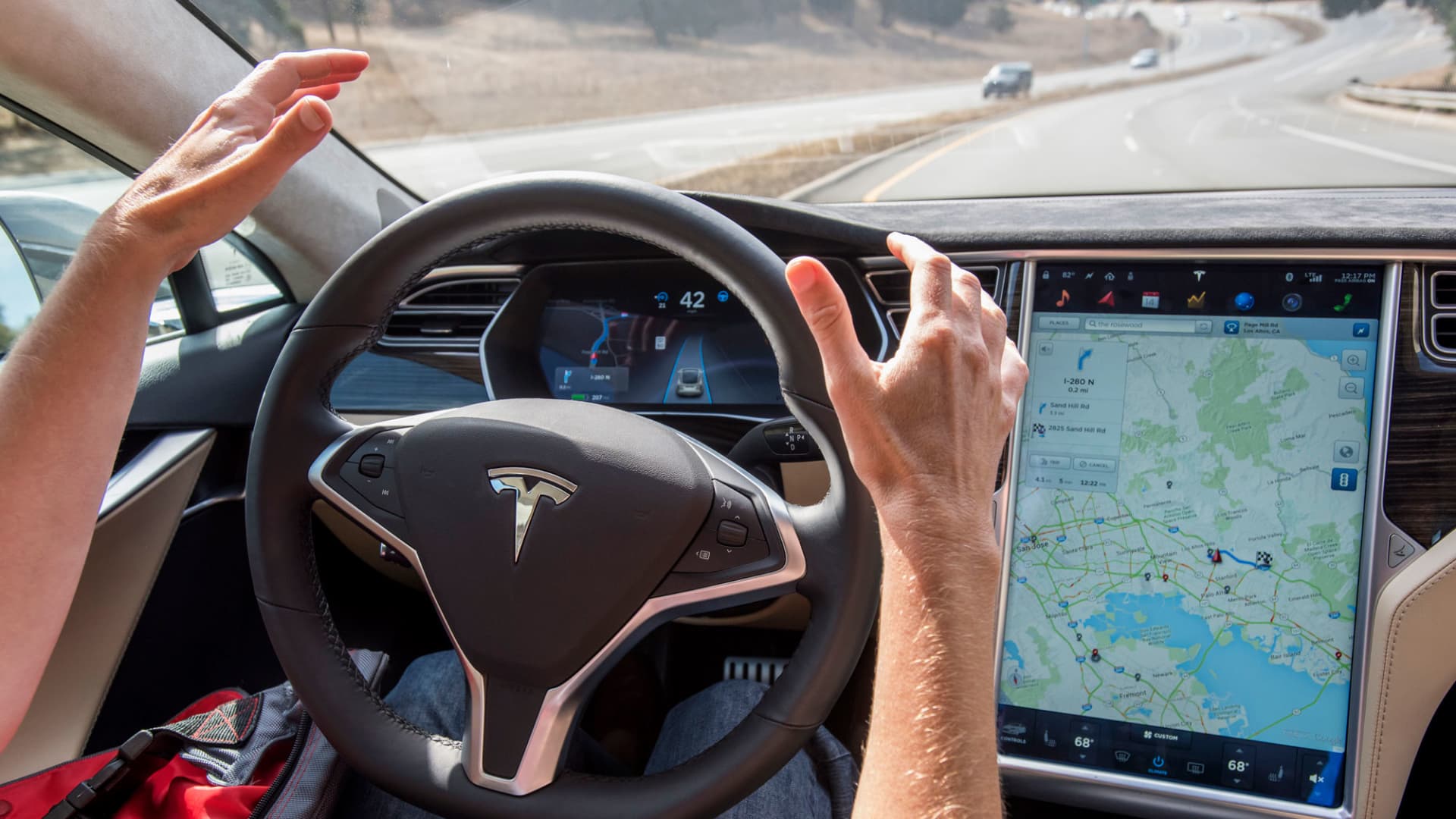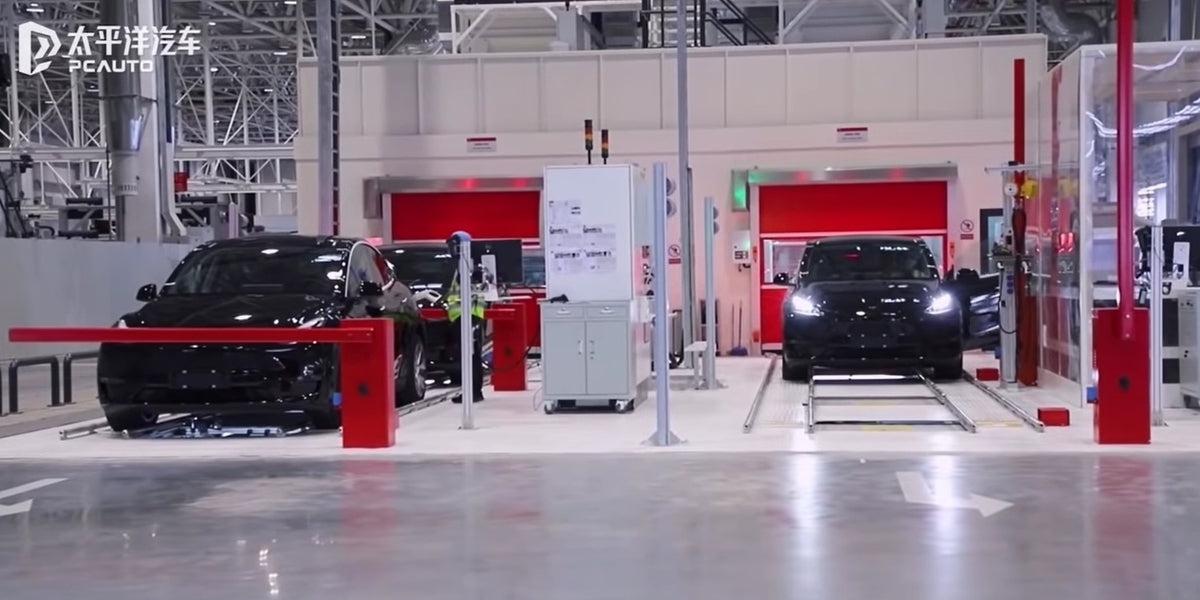JRP3
Hyperactive Member
Curious as to which part of that comment @Artful Dodger finds funny? I like a good laugh as much as the next guy so please share.Not to mention times when regen is reduced because the pack is too cold or at high SOC.
You can install our site as a web app on your iOS device by utilizing the Add to Home Screen feature in Safari. Please see this thread for more details on this.
Note: This feature may not be available in some browsers.
Curious as to which part of that comment @Artful Dodger finds funny? I like a good laugh as much as the next guy so please share.Not to mention times when regen is reduced because the pack is too cold or at high SOC.
I appreciate your post. More on my point, agreed radar sees beyond the plainly visible. This is critical for braking as in AEB and I agree with this and have experienced this, AEB is better than me, a human with reaction time requirements and in the EM example better than 2 humans with reaction time requirements. The low bar here is avoiding a rear end collision.
The unknown is the capabilities of FSD. Can FSD avoid a rear end collision if the vehicle in front hits the object without first braking? This gets back to how smart is FSD. Does FSD (like me) increase following distance when following an obscure vehicle like a box truck where I cannot see through the vehicle at all? Is it possible FSD is far better than me and also considers additional parameters - tire grip, vehicle weight, roadway driveable spaces etc. It is possible that the near immediate reaction time of FSD breaking along with a minor increase in following distance comes up equal to the benefits of radar?
It is a little like the case of running faster than the bear (vs faster than your buddy), you only need to brake faster/better than the car in front of you to avoid a collision.
We don't know the answer at this time. If driving under FSD manages following distances within the reaction time and braking distance of the vehicle being followed then the rear end collision risk is solved.... maybe.
Teslas camera was never designed for this purpose, and have no such abilities.
it can not, as someone suggested "see through" sunglasses to confirm your eyes are on the road.
It can guess if someone is WEARING sunglasses and if their head/neck are generally facing forward. or not.
Likewise it has no ability to see in low/no light as the other systems designed for this do.
It wouldn't be just regen braking, but powered deceleration using the electric motors.
This will require at least 3 motors and/or adjustable limited slip differential(s) though. Current torque vectoring uses the friction brakes IIUC.
Just watched a very nice GM commercial for EVs. EVerybody needs an EV. The end of the commercial announces GM will have lots of EV come 2025. Seems aimed at holding brand loyalty, please just wait for us.
Apparently, the NTSB is complaining to the NHTSA that they aren't regulating Tesla hard enough.
Wouldn't surprise me to learn that Musk doesn't want to make electric planes because he wants to avoid the NTSB at all costs.

A federal agency warns Tesla tests unfinished driverless tech on its users
In a letter to the NHTSA last month, NTSB chief Robert Sumwalt named Tesla 16 times while urging the sister agency to set stricter standards.www.cnbc.com
It would be interesting to measure the current draw of the radar through a driving cycle including the use of AP, FSD Beta, cruise control, etc. I'm sure Tesla would not waste the energy transmitting if it were not actively monitoring the radar data for some purposes.
What we do know is that once the trading public became aware of BTC, there is a downward trend. It would be interesting to see if the trend can also be explained by interest rates for instance. My point is that the bitcoin purchase by Tesla does not seem to have been beneficial to Tesla stockholders.
It occurred to me that the power saving from not using radar might allow for/justify overclocking FSD 3.0 HW.

That camera doesn't need to see through sunglasses. It only needs to see if the driver is looking at a phone or laptop or girlfriend or the ceiling because he's asleep. I suspect the camera is great at that. Good engineering is about optimization: don't spend money on more camera than is needed....It was designed to monitor for vandalism when the car was acting as a robotaxi. You don't care where a passengers eyes are behind sunglasses in that case.
But it's now potentially being used for a different task it's not great at. Better than nothing certainly, but not great....
Yeah, still remember their Superbowl commercial. If you look at what the actual message was, beside all the Will Ferrel and Norway stuff, it was basically: we will have good electric cars in the future. That is really telling, I mean you can go to investors for example and try to raise money for something you don't yet have but you are planning, but I think I've never seen a company advertise to consumers for a non-existent product. Oh the desperation.
The car should be better than humans. Radar, thermal imaging, night vision, could all be used to improve safety, assuming cost effective. This seems like a step backwards.
The reason you've never seen a company advertise a non-existent product is because companies don't do that. They spend money to make money. What does that tell us? That they were trying to sell something else. Specifically, their gas cars (instead of their competitors electric cars). They are terrified of the mad rush to EV's when they don't have a volume solution.
What that ad was really saying was; Norwegians are different from Americans. You don't drive an EV because you are an American. A lot of Norwegians do that but not many Americans. You want to live like the American you are. It's OK to treat yourself to another gas car, the EV's will be even better in a few years. As an American it's OK to do this. It's normal. Buying an EV would only be normal if you lived in a foreign country.
Someone recently said I would never make it in marketing. That's because I understand it too well (and don't like what I see).
When the batteries are fully charged regen braking needs somewhere to dump the energy into. If it gets dumped into the motors then the Curie limit is extremely rapidly reached on the neo magnets (which is terminal) and/or bad things happen to any other part of the motor due to the heat. In my experience just a few high speed braking events in some circumstances could cause those thermal limits to be reached (to be fair this would likely be more of an issue in some forms of highway driving). So @JRP3 is quite correct to point out that it is likely the friction brakes will likely be retained. I would however expect that one set of pads will last a few hundred thousand kilometres. I suppose it is possible they might be able to eliminate friction brakes provided the vehicle never exceeds a "one-time-max-regen-brake" speed and then goes into a "limp-until-cooled down" mode. I wonder what the regulators would say about that, or the FUDsters.It wouldn't be just regen braking, but powered deceleration using the electric motors.
This will require at least 3 motors and/or adjustable limited slip differential(s) though. Current torque vectoring uses the friction brakes IIUC.
It occurred to me that the power saving from not using radar might allow for/justify overclocking FSD 3.0 HW.
That camera doesn't need to see through sunglasses. It only needs to see if the driver is looking at a phone or laptop or girlfriend or the ceiling because he's asleep.
I suspect the camera is great at that. Good engineering is about optimization: don't spend money on more camera than is needed.
You seem eager to do verbal battle against overzealous Tesla fans, but one can get overzealous in that quest.
It has absolutely NOT been debunked. there is a huge amount of evidence that it is terrible for the environment on a scale that absolutely DWARFS the rest of the financial industry.This has already been debunked. Move along.


